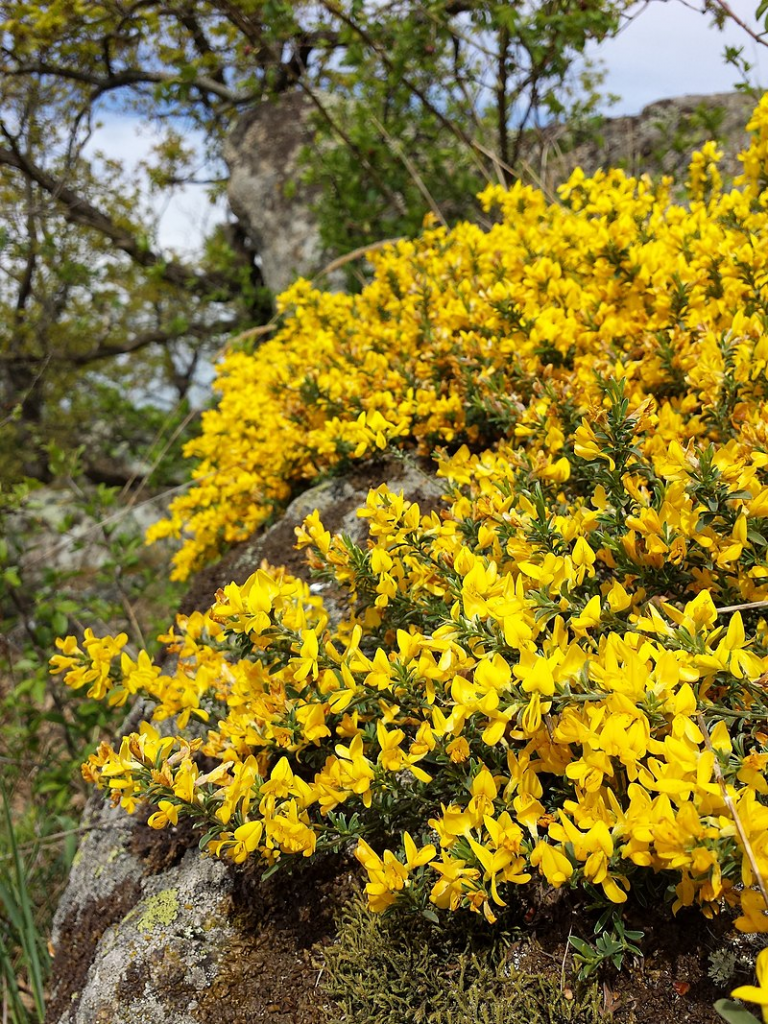
Also known as hairy greenweed, silky leaf broom, and creeping broom, this deciduous shrub is native to central and western Europe from southern Sweden to the Mediterranean where it grows in dry, sandy and stony soils. It is a member of the pea family, Fabaceae, that also includes lupines, mimosa, and black locust. The plants grows 12-18″ tall and usually has a prostrate habit and twiggy stems covered with fine hairs. The shiny leaves are 1/4-1/2″ long and have silvery hairs on their undersides. The bright yellow pea-like flowers are carried on 2-6″ long terminal racemes from late spring to summer. G. pilosa is an excellent choice for a xeriscape where it can be used as a ground cover, on a rock wall, or in border or rock garden. The genus name, Genista, is the Latin name for the plant known as broom. The specific epithet, pilosa, is the Latin word meaning hairy and refers to the hair on the stems and leaves.
Type: Flowering deciduous shrub
Outstanding Feature: Flowers
Form: Mostly prostrate
Growth Rate: Slow
Bloom: Terminal racemes of bright yellow pea-like flowers in late spring to summer
Size: 1’-1.5’ H x 2’-3’ W
Light: Full to partial sun
Soil: Average to lean, sandy, dry, well-drained
Hardiness: Zones 5-7
Care: Low maintenance
Pests and Diseases: None of significance
Propagation: Seed, cuttings in summer, layering; plants resent transplanting
Outstanding Selections:
‘Gold Flash’ (6 to 12″ H x 36″ W)
‘Goldilocks’
‘Procumbens’, (mat forming)
‘Vancouver Gold’ (6-8″ H)
Photo Credit: Stefan.lefnaer, Wikimedia Commons